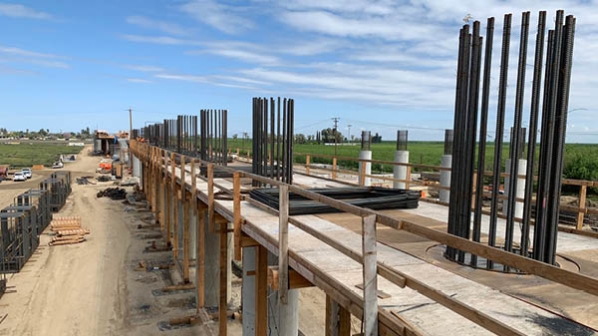The section will connect two multi-modal transport hubs in Los Angeles county, a new Burbank Airport station, and Los Angeles Union Station (LAUS). These hubs will interchange with regional and local mass transit services, as well as the airport and highway network in the San Fernando Valley and Los Angeles Basin.
The draft Environmental Impact Report/Environmental Impact Statement (EIR/EIS) will evaluate the impact and benefits of CHSRA’s build alternative that would realign existing tracks to allow for the addition of two additional electrified high-speed tracks to be added along much of the corridor. As well as high-speed services, the new lines could also be used by Metrolink and Amtrak trains, while Metrolink, Amtrak and freight services could use the two non-electrified conventional lines.
The existing four tracks leading to LAUS will be retained, with two of these electrified.
The draft EIR/EIS is available for public comment and review under the California Environmental Quality Act (CEQA) and federal National Environmental Policy Act (Nepa) until July 16.
The final EIR/EIS document will be issued in 2021 and presented to the CHSRA board for certification and project approval under CEQA and NEPA.
CHSRA will undertake the public hearings and open house for the project online, due to public health and safety requirements due to the coronavirus.
The Burbank - Los Angeles project will provide the northern access to Los Angeles for the California high-speed project. California originally envisaged a 320km/h line connecting San Francisco and Sacramento with Los Angeles and San Diego, but these plans were scaled back last year by the governor of California, Mr Gavin Newsom, due to spiralling costs and poor oversight. The line is now due to run from Avenue 19 in Madera to Poplar Road near Shafter.
Introducing high-speed services along the corridor will improve safety and operation for passengers and freight, CHSRA says, and will also increase the volume of traffic.
The project will also support capacity enhancements and reliability improvements along the United States’ second busiest passenger line, the Lossan corridor between Los Angeles, San Diego, and San Luis Obispo.
With the release of the draft EIR/EIS, CHSRA remains on schedule to complete environmental clearance for the full Phase 1 system by the federally mandated 2022 deadline.
For detailed data on rail projects around the world, subscribe to IRJ Pro.

